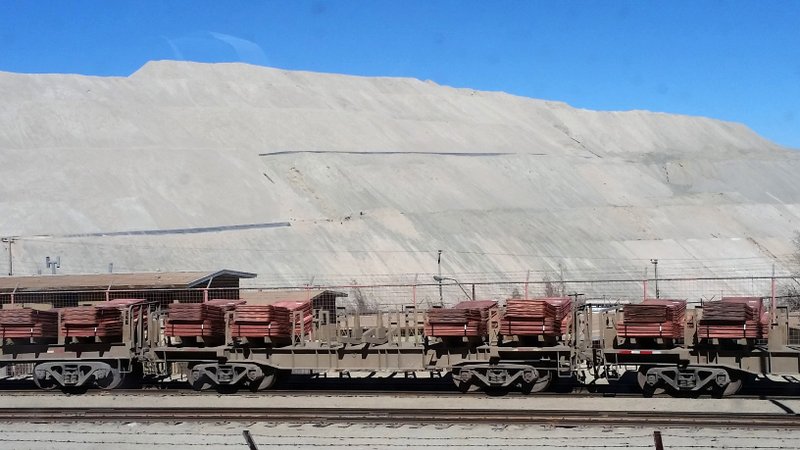On nights lit by a full moon, thieves leap from trucks onto trains as they roll through Chile's Atacama Desert, before throwing 180-pound slabs of copper to the ground and disappearing into the dark.
It's a tactic known as "the cat," and the robbers are "moles" because no one knows where they come from or where they hide their loot. What's worse for the mines that dot the desert, the robberies are becoming more common and more audacious.
About 40 incidents were reported in the first half of this year, according to the prosecutor's office in Antofagasta, up from just six in all of 2014. The thefts started to increase late in 2017 as copper prices rose to the highest in more than two years. While prices have slumped recently, the thieves seem immune to the trade-war turmoil that's rattling metal markets.
"Specialized gangs assaulting moving convoys has become common," said Valeria Ibarra, Antofagasta's regional coordinator of public safety. "These are professionals. If they see that one company is taking security measures, they'll just move on to the next one."
The sheets of stolen copper cathode are taken to illegal yards and sold as scrap at a 30 percent discount to market prices, Ibarra said.
In June, thieves stole from moving trains 2.5 metric tons of the metal, worth more than $15,000 on the London Metals Exchange. Operators noticed only when they saw the dust the gang's vehicles left behind as they escaped through the desert, according to local newspaper Mercurio de Calama.
A common target for the thieves is Antofagasta's logistics unit Grupo FCAB, which owns and operates about 430 miles of railway lines used to transport cathode and semiprocessed copper known as concentrate from mines to ports.
State-owned Codelco has also reported thefts, according to a statement by the prosecutor's office in Antofagasta. HP Billiton's Spence and Escondida copper mines, Antofagasta's Zaldivar, Mantos Copper's Mantos Blancos and Yamana Gold's El Penon have all reported smaller robberies, prosecutors said.
"To avoid the frequency of these robberies and to protect workers, the company has strengthened its controls and preventive measures," FCAB said in an emailed response to questions.
Robbers are getting more creative and more violent, Ibarra said.
A new method is known as "the anchor." When trains slow down in steeper areas, gangs hook mooring lines to a pile of cathodes and throw the anchors onto the railway lines. As the train advances, the pile weighing about 772 pounds is dragged off the wagon and is quickly picked it up by trucks.
In mid-July, Antofagasta's regional government set up a permanent working group that includes the police, the government, FCAB and mining companies to address the issue and coordinate surveillance and investigations.
One of their first tasks will be to solve a mystery -- why so many of the robberies happen on Thursdays. Government officials are wondering if it coincides with a change in shifts, or if it has to do with the proximity to the weekend.
"The most worrying thing is the integrity of workers and security guards because criminals are acting with more violence and aggressiveness," Ibarra said. "We need to take action before it's too late."
SundayMonday on 08/05/2018
